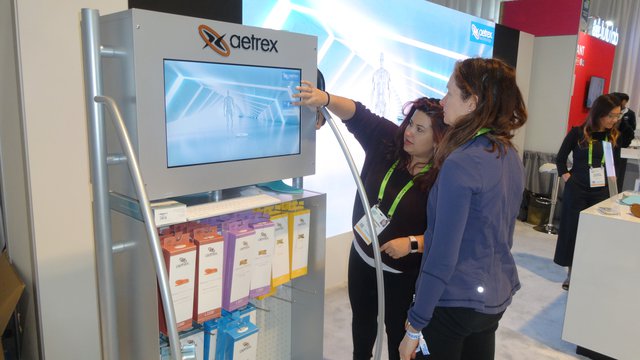Commentary

Data from an AI-powered foot scanner allows a 3-D printer to create customized orthotic shoe inserts.
5G networks and artificial intelligence were the dominant themes at CES 2019 sessions in Las Vegas last week. There is no question that these two technologies, along with augmented and virtual reality, will play big roles in the re-emergence of retail that has begun to unfold.
And because interactive kiosks play an important role in making retail more relevant to consumers, kiosk providers not only need to be cognizant of these technologies, but also, they need to utilize them.
5G, AI and VR/AR are collaborative in the ways they are making retail experiences more engaging and efficient. 5G networks will enable devices to download and transmit larger amounts of data faster, and support faster implementation of IoT, AI and VR/AR technologies.
5G promises change
“5G will change everything,” said Hans Vestberg, CEO of Verizon, during his CES keynote. “5G is the promise of so much more than what we have seen from wireless technology.” Fellow keynoter John Donovan, CEO of AT&T Communications, discussed his company’s recent launch of its 5G Evolution network.
AI — which uses robotics, sensors, natural language processing, speech recognition, text-to-speech, computer vision, machine learning, machine reasoning, decision-making, deep learning, neural networks, business analytics and data services — has already made significant inroads in self-service retail, the best known example being Amazon Go cashierless stores.
The technology continues to advance. Facial recognition cameras on retail kiosks can now identify more human features, recognize more consumer needs and recommend a greater variety of products.
On the back end, the technology can automatically place orders according to patterns it recognizes on an individual location basis. One of the best examples of this is the AI solution used by a California beverage bottler, Reyes Coca Cola Bottling, that identifies the right product, the right space-to-sales ratio and the right promotional activity for products in every one of the company’s 19,000-plus vending machines.
Kiosks play an important role
While AI is enabling more opportunities for self-service shopping, the technology is also allowing interactive kiosks to make traditional retailers more engaging. Kiosks allow retailers to merge the in-store shopping experience with the content-rich experience of online shopping.
One of the best examples on display at CES was YoCam, an AI-powered app from Perfect Corp. that lets customers try on AR makeup using an in-store mirror, their desktop or their smartphone.
The app, already being offered by numerous retailers and vendors (Ardell, Bobbi Brown, Estée Lauder, Lancome, Laura Mercier, L’Oréal, Macy’s, and Yves Saint Laurent), uses facial mapping to develop an AR image from a photo or print image of the user. This allows consumers to see what they would look like wearing new makeup or hair colors. This year, Perfect Corp. introduced a number of improvements to YoCam, such as skin health recommendations.
The Converge Retail kinetic display features rail-mounted tablets that slide laterally as customers browse products on display in a retail environment. The touch-interactive tablets provide product information that allows customers to configure design options, view and compare products, and check product availability, both in-store and online. At any point in the process, customers can send content from the tablet to their phone, where they can purchase in-aisle or continue browsing at home.
Another example is from American Eagle Outfitters, which features an interactive kiosk from Aila that allows shoppers to scan items and to see and request other sizes and styles. Shoppers can receive product recommendations, view running cart totals and email information to themselves or potential gift-givers without leaving the fitting room.
3-D printing, another IoT technology being deployed at retail, similarly allows for a more personalized customer experience. Aetrex, a footwear retailer, uses a foot scanner that integrates cameras and pressure centers to capture data about a customer’s feet, allowing for the production of customized orthotic inserts for their shoes.
Kiosk providers cannot afford to “wait out” the opportunities these new technologies offer. While 5G, AI, VR/AR and 3D printing all have applications beyond kiosks, kiosks have a significant role in the re-emergence of retail.
Topics: Assisted Selling, Automated Retail / Vending, Connectivity, Customer Experience, Customer Service, Kiosk ROI, Kiosks, Kiosks / Self-Service, Omnichannel / Multichannel, Technology
Elliot Maras is the editor of KioskMarketplace.com and FoodTruckOperator.com.
Sponsored Links:


